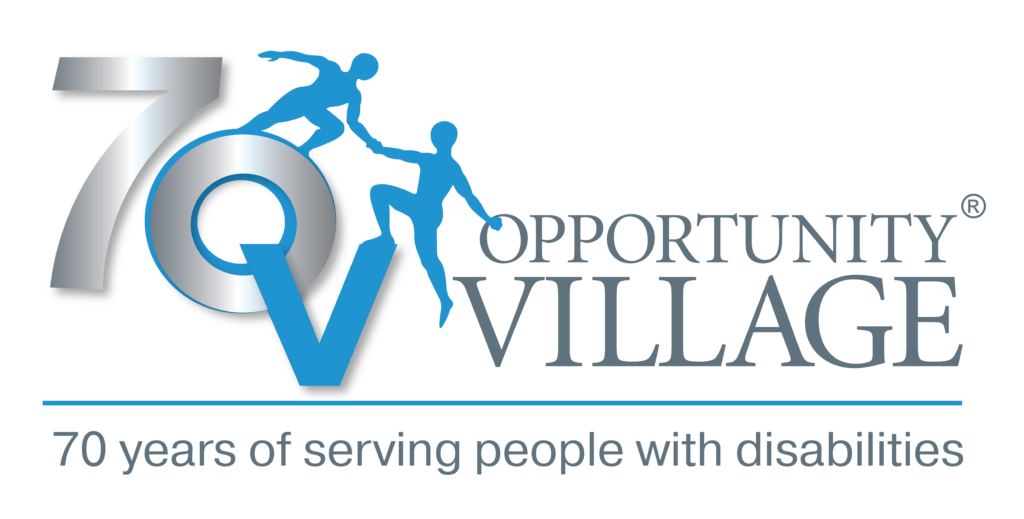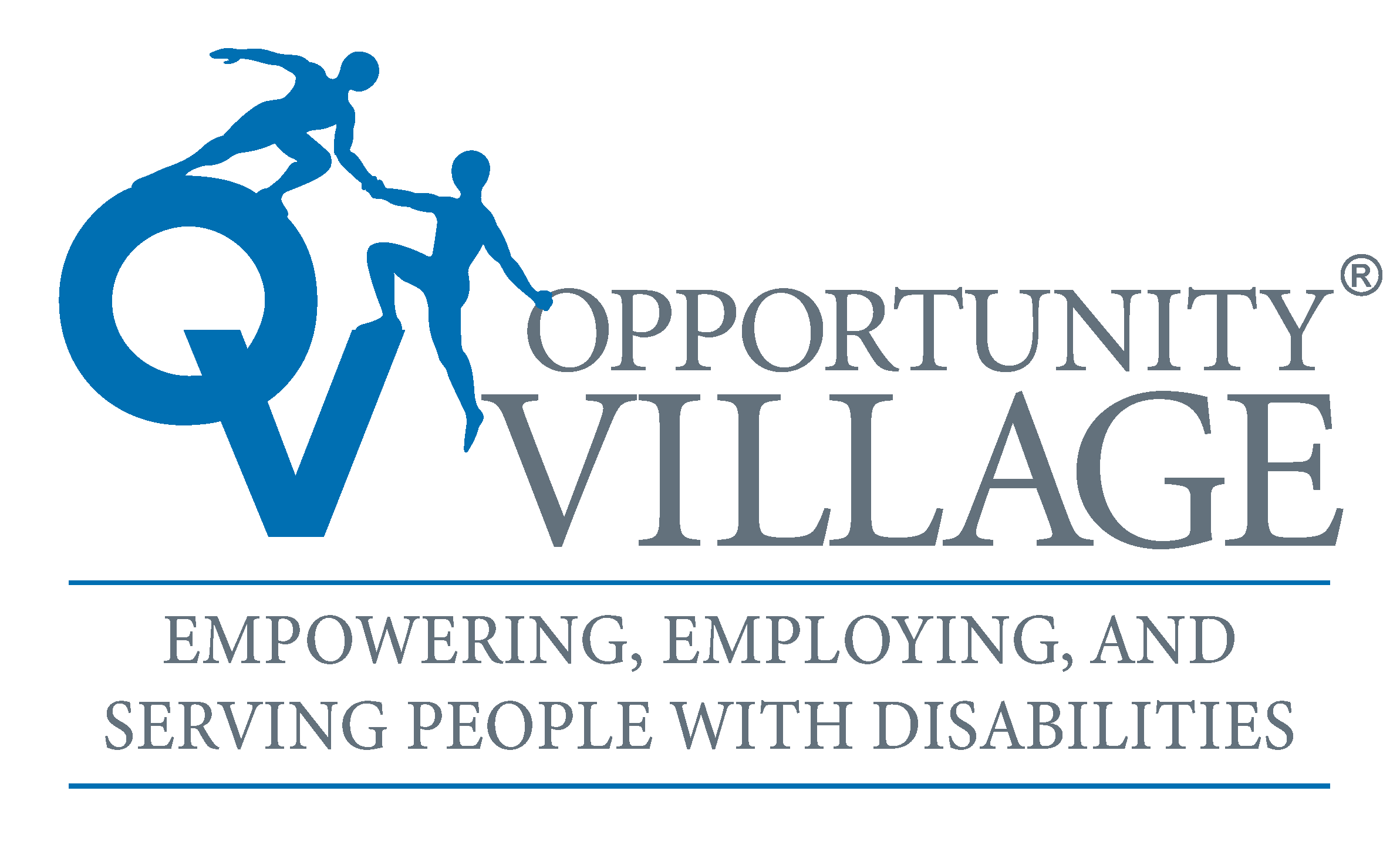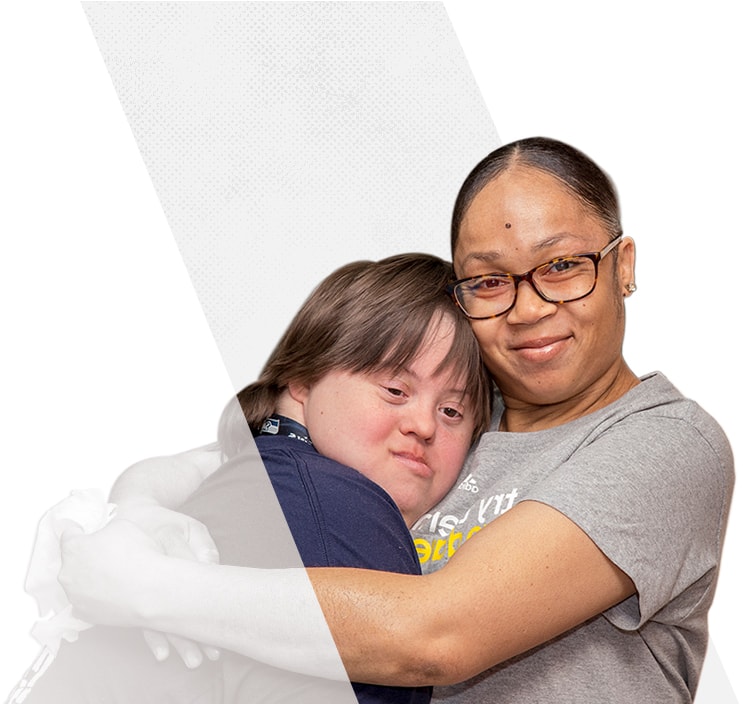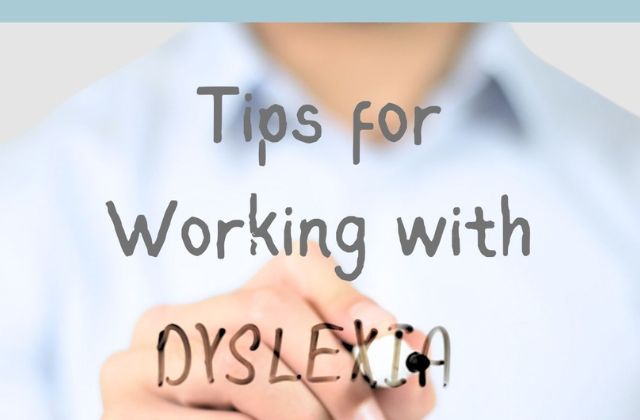
Dyslexia is a language-based (reading and writing) learning disability that could affect as many as 15 to 20% of Americans.
Symptoms differ by age, and dyslexia tips for adults will differ from those offered to children with a recent diagnosis.
A dyslexia test can be given at any age, and some adults go untested or undiagnosed for years without the tools necessary to overcome its challenges.
What Is Dyslexia?
While reading may come naturally for some, it’s actually a highly complex process for the brain.
First, the brain connects a letter to a sound, then it puts these sounds in order, the sounds are then put into words, the words into paragraphs, and the paragraphs into information or a story.
For adults and young people with dyslexia, the brain has trouble matching letters to sounds and then putting those sounds in the correct order to form words.
When the first step is a challenge, the following steps are even more challenging.
Dyslexia may interfere with the way a person reads, the way they write, understanding what they read, and may even affect verbal speech by making it difficult to find the words they wish to use by memory, or feeling like they have words stuck “on the tip of their tongue”.
Common Dyslexia Misconceptions
There are a few misconceptions that surround dyslexia.
The most common is that those with it tend to read or write letters or words backward. While some children with dyslexia may do this as a symptom, it’s not always a sign of the disorder.
Another myth about dyslexia is that it doesn’t show itself until children are in elementary school. Some signs of dyslexia aren’t directly linked to reading or writing, and being a late talker or having trouble finding rhyming words can be early signs.
Lastly, it’s also often believed that young people with dyslexia can simply “overcome” the disability by trying harder to read. It’s important to understand that dyslexia is a neurodevelopmental issue within the brain, that the brain is wired differently, and therefore requires a different approach to overcome challenges.
Occupational therapy, accommodations, and practice can help to teach the brain over time to make lasting improvements.
You might be interested in these strategies for dyspraxia.
How Common Is Dyslexia?
Dyslexia is more common than most think. Dyslexia openly affects about 5 to 10% of the U.S. population, however, estimates to include those undiagnosed put this number closer to 15 to 20%.
There are two types of developmental dyslexia, primary and secondary.
Primary dyslexia is believed to stem from a genetic mutation inherited from parents, and an estimated 40 to 60% of children with at least one parent who has dyslexia will be dyslexic as well.
Secondary dyslexia stems from neurological developmental issues occurring in utero. Symptoms of both primary and secondary dyslexia will often present early in childhood.
There is a third type of dyslexia called acquired dyslexia, which develops later on as the result of brain trauma from an injury or illness. This type of dyslexia may develop after a brain injury, stroke, or with the development of dementia.
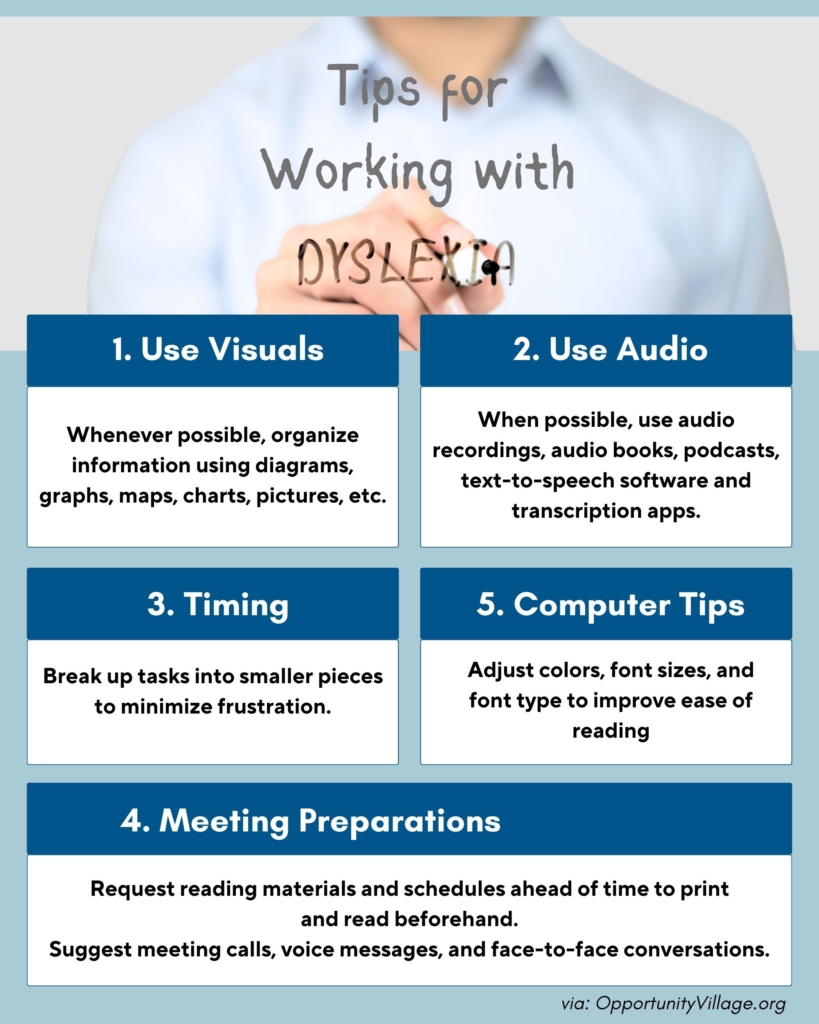
Tips To Work With Dyslexia
A few tips can make working and living with dyslexia easier for adults. Our top 5 tips to help adults with dyslexia include:
- Use visuals – Using visuals can be extremely helpful for adults with dyslexia. Rather than creating a list using words, small drawings or pictures can communicate effectively without any necessary reading. Many with dyslexia are visual learners, and having visual cues or notes using pictures can help with speed of understanding and memory.
- Use audio – Text-to-speech applications and audiobooks are two excellent resources for adults with dyslexia. These assistive technology tools and software can be used in both home and working applications.
- Break-up tasks – Some tasks take longer for people with dyslexia. One of the most useful dyslexia tips for adults is to break up tasks to minimize frustration. These breaks allow the brain to reset, they offer a reward, and they can make these challenging tasks go much faster.
- Make color and font adjustments – Studies have shown that some fonts and some colors are more difficult for those with dyslexia, while others can make reading easier. If an adult with dyslexia is having trouble reading on a computer or device, changing the font and color of the text can make a world of difference.
- Prepare ahead – For adults with dyslexia, going into a meeting or making a presentation can be particularly challenging. In situations such as these, asking for reading materials ahead of time for early preparation can increase confidence and make these professional tasks go more smoothly.
Opportunity Village provides resources for adults with dyslexia and other learning disabilities. You can connect with us via our website or social media.
